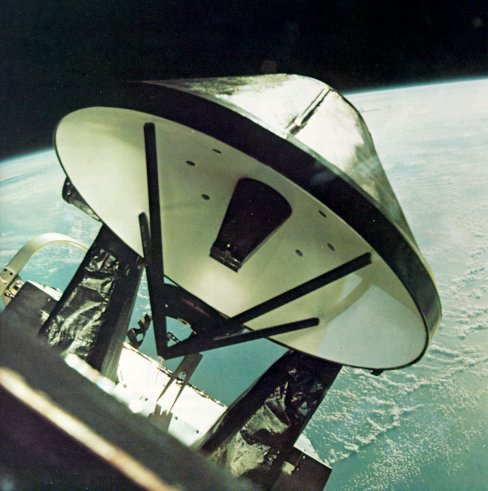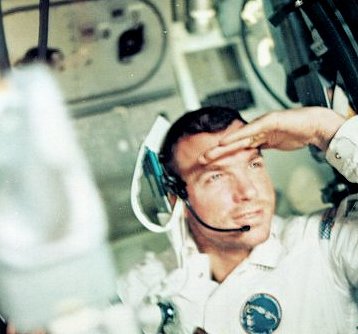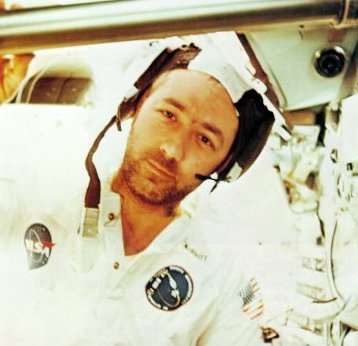















|

|
| The rendezvous radar antenna on the LM, untried in space, was photographed through a CM window by one of the Apollo 9 crew, perhaps in anticipation of the fact that it would soon be unstowed, powered up, and put to the all-important test. A critical and sophisticated part of the rendezvous system, it worked beautifully when tried two days roter. The curved metal strap at the extreme left, not part of the antenna, is a handrail to be grasped by an Astronaut floating outside the spacecraft. |

| In the cheerful mood prevailing when the three crew members were back together, Dave Scott mugs for Rusty Schweickart's camera. Here he shows how he, when alone in the command module, had had to peer against the glare to catch his first glimpse of the LM as it flew back in rendezvous. |

| Five hard days of carefully doing what had never been done before shows in the strained face of Apollo 9 Commander Jim McDivitt, normally a relaxed and equable man. Attempting to describe the cool courage of McDivitt and Schweickart when they went off for the first time over the horizon in the unlandabie LM, some observers declared it the bravest act since man first ate a raw oyster. |


